The future is in the past. The rebirth is from the ashes. It is out of the human gaze where we may find answers.
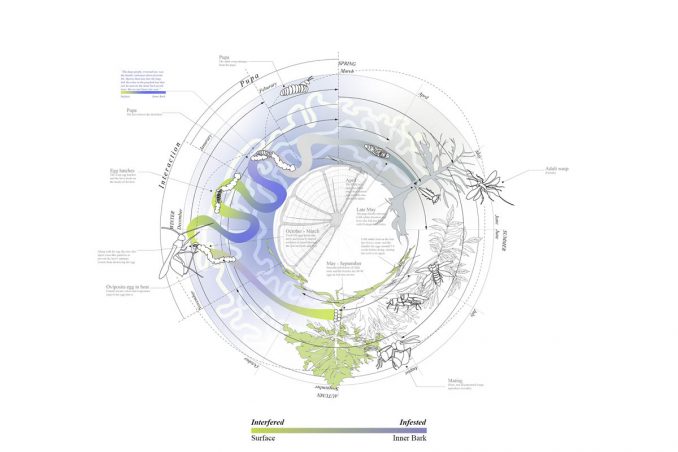
The Death and Life of Ash: Landscape Tactics to Adapt to Invasive Species explores how to live with the inevitable in the post-Anthropocene. It was developed in response to the impacts of the Agrilus planipennis (Emerald Ash Borer -EAB), an invasive species threatening North American forests. The emerald ash borer is a wood-boring beetle indigenous to Asia. Since its accidental introduction, EAB has prevailed and devastated Fraxinus sp. (Ash) populations across the United States.
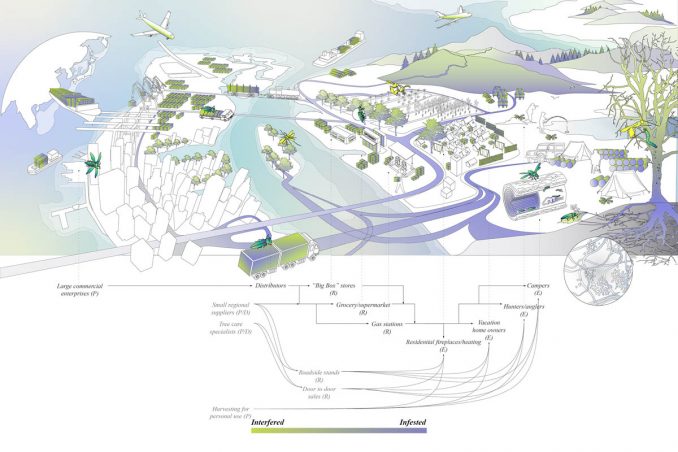
In Massachusetts, the spread of EAB may cause the regional elimination of white ash, which anchors the forest ecosystem through multi-species interaction. Ash is a critical food source and component of habitats for threatened amphibians, like Scaphiopus holbrookii (Eastern spadefoot) and Ambystoma laterale (Blue-spotted salamander). Culturally, ash has been used as a replacement tree for Ulmus sp. (Elms) killed by Dutch elm disease in urban areas, revealing a recent history of invasion, species loss, and ecological change that embodies the Anthropocene. This project accepts the larger ecosystem impacts of EAB but proposes that strategically preserved pockets of ash forest throughout Massachusetts could be beneficial for sensitive species, future research, and public engagement.
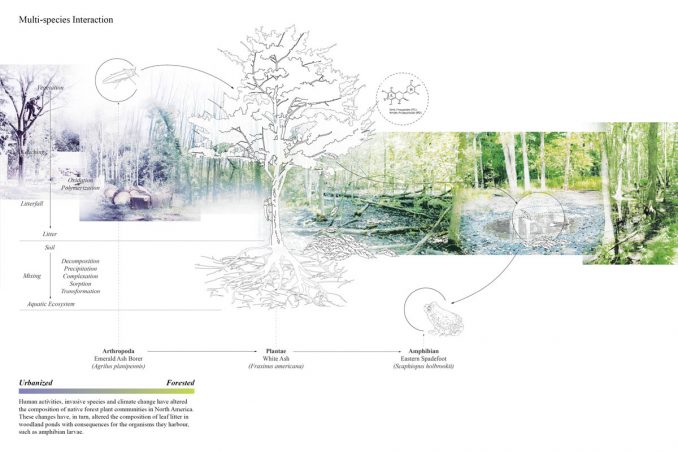
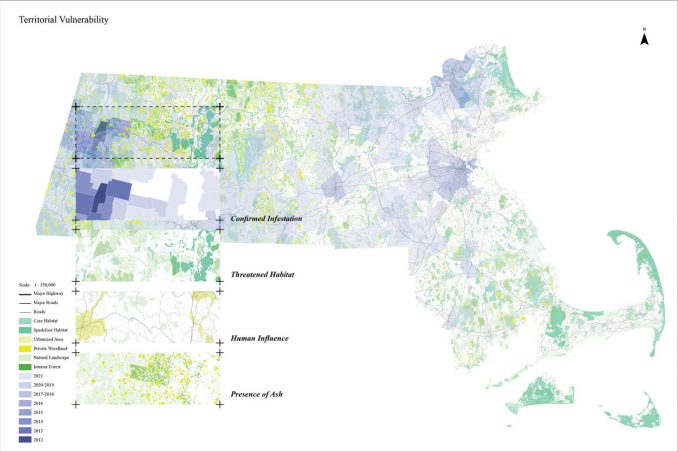
The design proposes a regional buffer ring strategy for preemptive ash removal and management to protect the EAB-free core habitat zone. This proposal proposes two hybrid operations to complete selective removal in the buffer ring. One is to combine ash removal with vernal pond construction to utilize tree soil depressions created through ash removal and the water table change. Another combines removal with replacement reforestation plantings, like Acer saccharum (Sugar maple), to lessen the aesthetic and environmental impacts and increase species diversity.
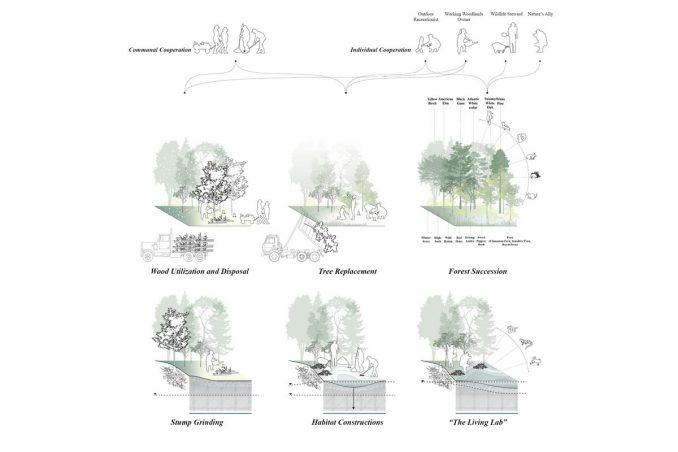
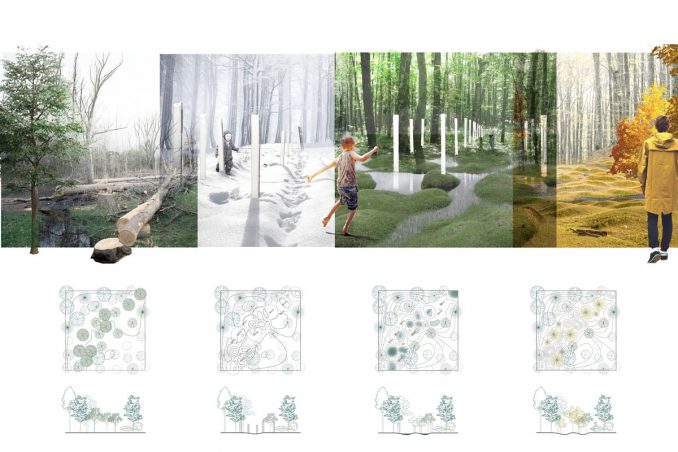
An immersive and educational trail experience is proposed at the entrance area of Conway State Forest. This area functions as the last interface between the protected core and potential threats in the buffer ring. Hybrid operations create a merging pattern of wetland and maple forests. The design renovates the trail system within the transition area to increase human interaction and education. The narrative of managing invasive species is embedded in visitor sequence, connecting three interpretive moments: a memorial tunnel in the logging site, a contemplation garden in the hybridized habitat, and a canopy lookout at the edge of preserved ash forest. It offers places to memorize the death, the rebirth, and the presence of white ash.
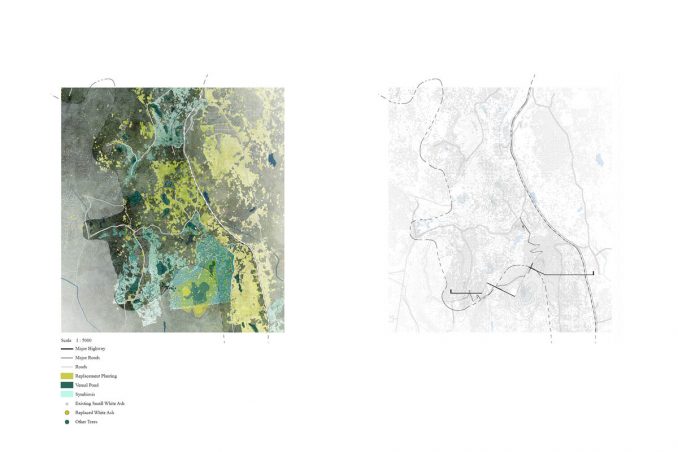
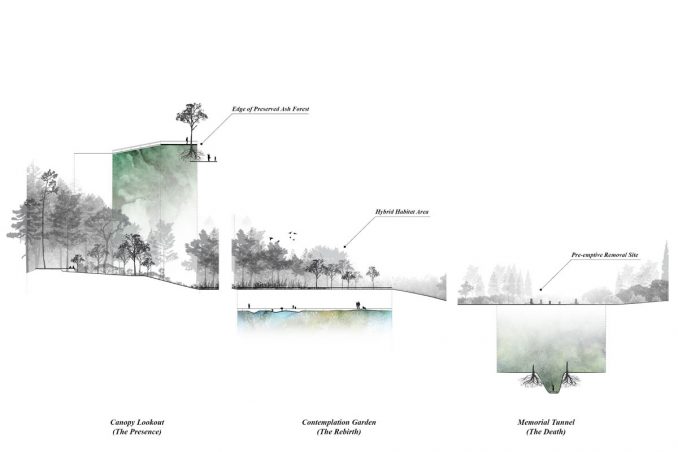
This project reimagines the threats of Emerald Ash Borer as an opportunity to test a new type of landscape, to rethink and apply traditional management techniques of invasive species at a different scale and spatial pattern. The design proposes a preemptive response to a regional threat and reveals a new hybrid landscape—one that acknowledges the role of humans in a changing landscape, and preserves, or at least, extends the life of a unique forest mosaic for future generations.
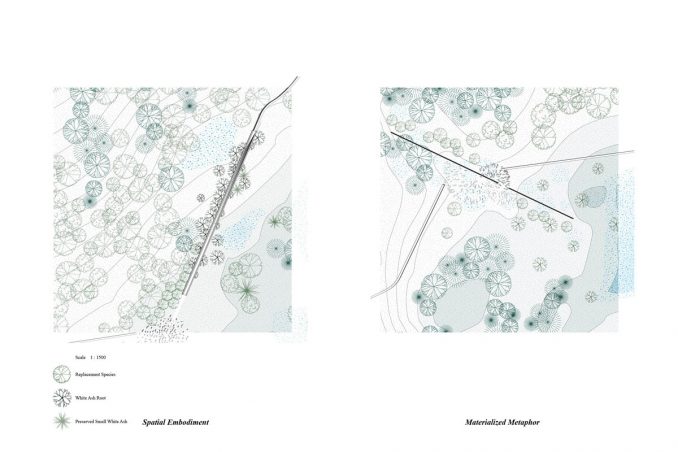
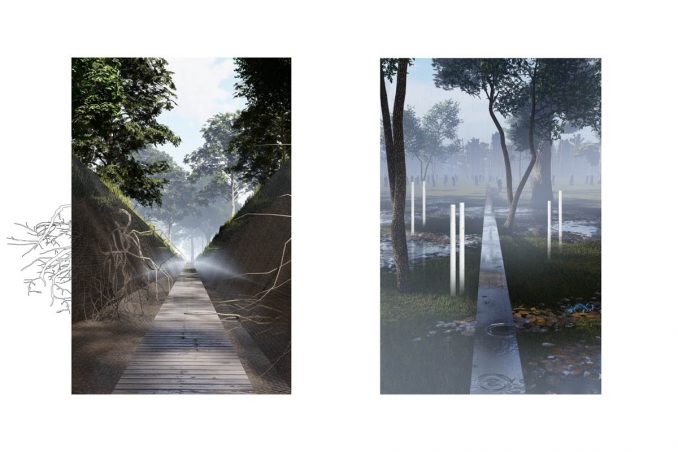
The Death and Life of Ash: Landscape Tactics to Adapt to Invasive Species
Student: Sijia Zhong
University: Harvard University Graduate School of Design
Supervisor: Gena Wirth
